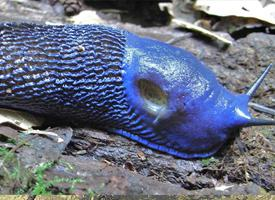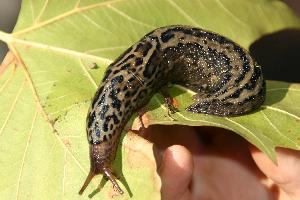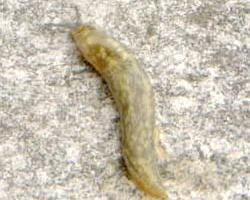
Váhy a míry
| Délka | od 120 do 160 mm |
|---|
Stav ohrožení
| Neohrožen |
Popis zvířete
The Carpathian blue slug, scientifically known as Bielzia coerulans, is a captivating terrestrial gastropod mollusk that belongs to the family Limacidae. This intriguing species is primarily found in the Carpathian Mountains, stretching across a vast area that encompasses parts of Eastern and Central Europe, including regions within Poland, Slovakia, Ukraine, and Romania. The Carpathian blue slug thrives in the moist, dense forests of these mountainous regions, favoring the cool, damp conditions provided by the leaf litter and underbrush.Characterized by its striking appearance, the Carpathian blue slug has a distinctive blue to blue-green coloration, which sets it apart from many other slug species. This vibrant hue not only serves as a fascinating visual feature but may also play a role in camouflage, blending in with the shadows and foliage of its natural habitat. The body of the slug is elongated and slightly tapered towards the rear, with adults reaching lengths of up to 12 centimeters (about 4.7 inches), making it one of the larger European slug species.
The skin of the Carpathian blue slug is smooth, with a slimy texture that is typical of most slugs. This mucus coating serves multiple purposes: it aids in locomotion, allowing the slug to glide over rough surfaces with ease; it helps retain moisture, which is crucial for the slug's respiratory function and overall hydration; and it provides a means of defense, making the slug less palatable to potential predators.
The diet of the Carpathian blue slug is primarily herbivorous, feeding on a wide variety of plant matter found within its forested habitat. This includes leaves, stems, and the decaying matter of various plants, which it consumes using its radula, a specialized organ equipped with tiny, tooth-like structures. In addition to plant material, the slug is also known to eat fungi, contributing to the ecological balance by participating in the decomposition process of dead organic matter.
Reproduction in the Carpathian blue slug follows a fascinating process typical of many hermaphroditic gastropods. Each individual possesses both male and female reproductive organs, allowing them to perform both roles during mating. Following a successful mating, each slug lays a clutch of eggs in a moist, hidden location, ensuring the next generation's survival.
Despite its striking appearance and ecological significance, the Carpathian blue slug remains relatively understudied, and its conservation status is not well-documented. However, like many species with limited ranges, it could be susceptible to habitat loss and degradation, primarily due to deforestation, pollution, and climate change. Efforts to preserve its natural habitat are crucial for the continued survival of this unique and fascinating mollusk.
In summary, the Carpathian blue slug is a remarkable creature that captivates the interest of those fortunate enough to encounter it. Its vivid coloration, significant size, and ecological role within its habitat make it a notable species within the diverse world of gastropods. As we continue to explore and understand more about the natural world, the Carpathian blue slug serves as a reminder of the beauty and complexity that can be found even in the most unassuming creatures.
Podobná zvířata
Nové fotografie zvířat
Top 10 zvířat
- Chinese water dragon (Physignathus cocincinus)
- Galápagos tortoise (Geochelone nigra complex)
- Dolphin gull (Leucophaeus scoresbii)
- Japanese macaque (Macaca fuscata)
- Colombian red howler (Alouatta seniculus)
- Sea urchins (Echinoidea)
- Diana monkey (Cercopithecus diana)
- Moustached guenon (Cercopithecus cephus)
- Colossal squid (Mesonychoteuthis hamiltoni)
- Common house mosquito (Culex pipiens)

